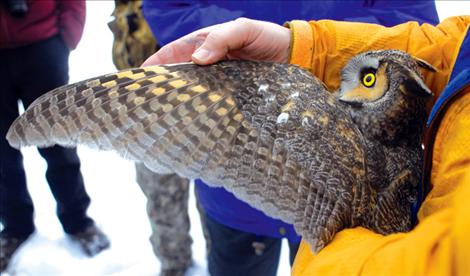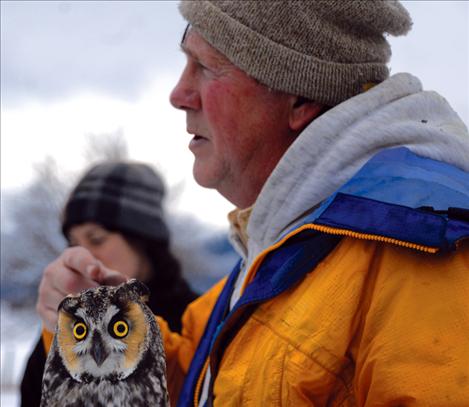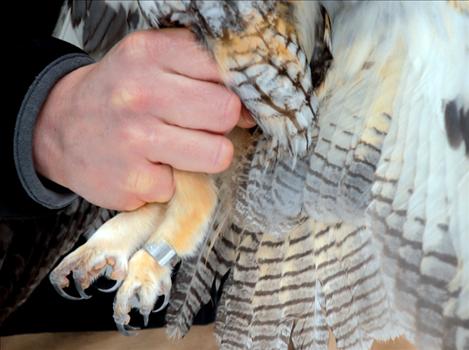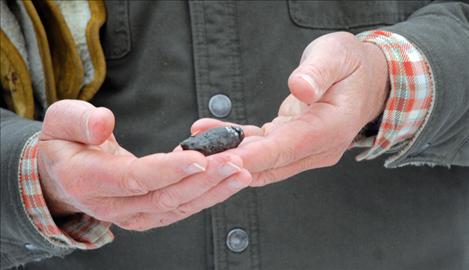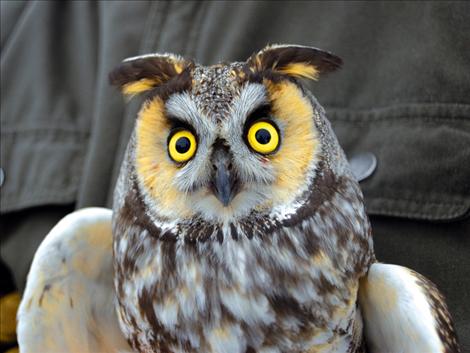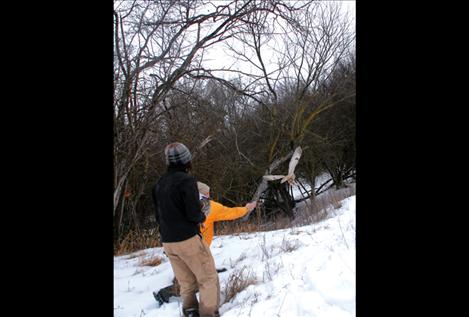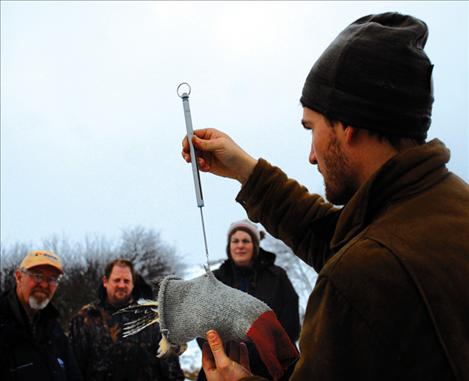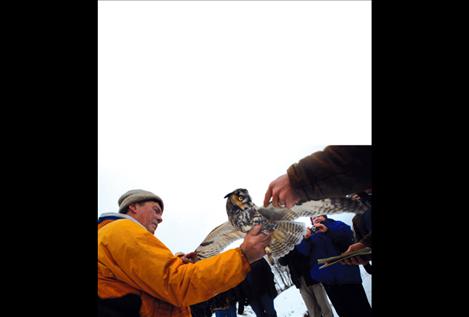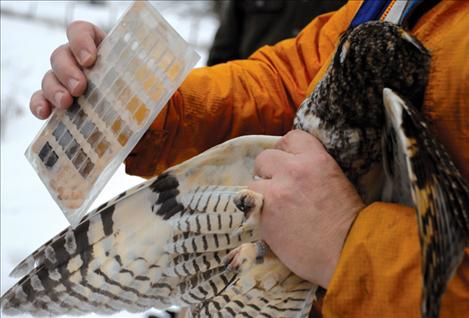Valley birders join owl researchers for field day
Hey savvy news reader! Thanks for choosing local.
You are now reading
2 of 3 free articles.
Who sleeps all day, is cute, has big ears and eats 95 percent voles?
If you had some other candidates before that last qualifier, the answer is long-eared owls.
Denver Holt and Jessica and Matt Larson from the Owl Research Institute in Charlo led a dozen people from Whitefish, Kalispell and Polson on a day in the field in search of long-eared owls on Jan. 26.
Holt and company have banded 1,600 long-eared owls and recorded 230 nests across the study area, from Pablo to Missoula, for 27 years.
Catching a long-eared owl involves setting up nets in a dry creek bottom. Holt explained that Hawthorne thickets are home to more than just owls.
“Everything winters here — fox, coyote, deer, bear,” Holt said, since the creek bed has thick brush and a spring that doesn’t freeze.
In addition to the long-eared owls, Matt also spotted a saw-whet owl, and several others saw a great horned owl.
With three nets in strategic intersections throughout the tunnels of thorn-laden trees, the researchers “hid” the visitors in a copse of trees out of sight of the birds and flushed the owls.
Two long-eared owls were caught in the nets. Both were already banded, but the ORI researchers recorded the band numbers, weighed the owls, used a color chart to estimate sex, measured the length of tail and wing and entered the owls in their field notes. Later they will check the master list of banding numbers to check on weight gain and age.
“Most male owls are lighter-colored,” Jessica
noted, holding an owl.
She also said the “ears” are actually tufts of feathers used for camouflage and showed the real ears behind the facial disc. The ears are large and asymmetrical on a long-eared owl.
The owls are nocturnal and spend the day sleeping so they can hunt voles and other small mammals at night. Holt explained that long-eared owls are one of the few birds that roost communally in winter. He also said they believe owls see in black and white, due to a higher ratio of rods to cones in their eyes.
The owls can constrict their pupils separately.
With excellent eyesight and hearing, the long-eared owls feast on voles for 95 percent of their diet. In fact, males court females by giving them bouquets of long-stemmed voles.
Female long-ears are heavier than males, with an average weight of 10 ounces, while males average 9 ounces. Their average wingspan measures 38-39 inches.
“So they have big, wide wings and low body weight,” Holt commented.
“The average vole weighs 40 grams (about 1.4 ounces),” Matt said, so the owls carry them easily.
One of the owls caught Saturday was light colored, but it weighed 11 ounces. Its color would suggest a male, but it was heavier than most males, so researchers were intrigued.
Holt grabbed an owl pellet for the group to examine. He said each pellet averages two or three prey items. Voles and mice are identified by their dentition.
“A three course dinner,” one observer noted.
Discussing stress to the owls, Holt said flushing them is not stressful, but holding them in-hand is, although they go right back to whatever they were doing when they are released.
ORI is a leader in explaining their research to the public, Holt said. The institute routinely offers a day in the field as an auction item for charities. Holt said. In Montana, it might bring $100 or more for the charity, but in cities, people pay as much as $1,000 or more. ORI educates people; the charity makes some money; and people may return to ORI for a class, lecture or tour with Holt and his staff.
The group Saturday applauded Holt, the Larsons and other staffers, and enjoyed the day, despite rain, slick roads and waiting.
















